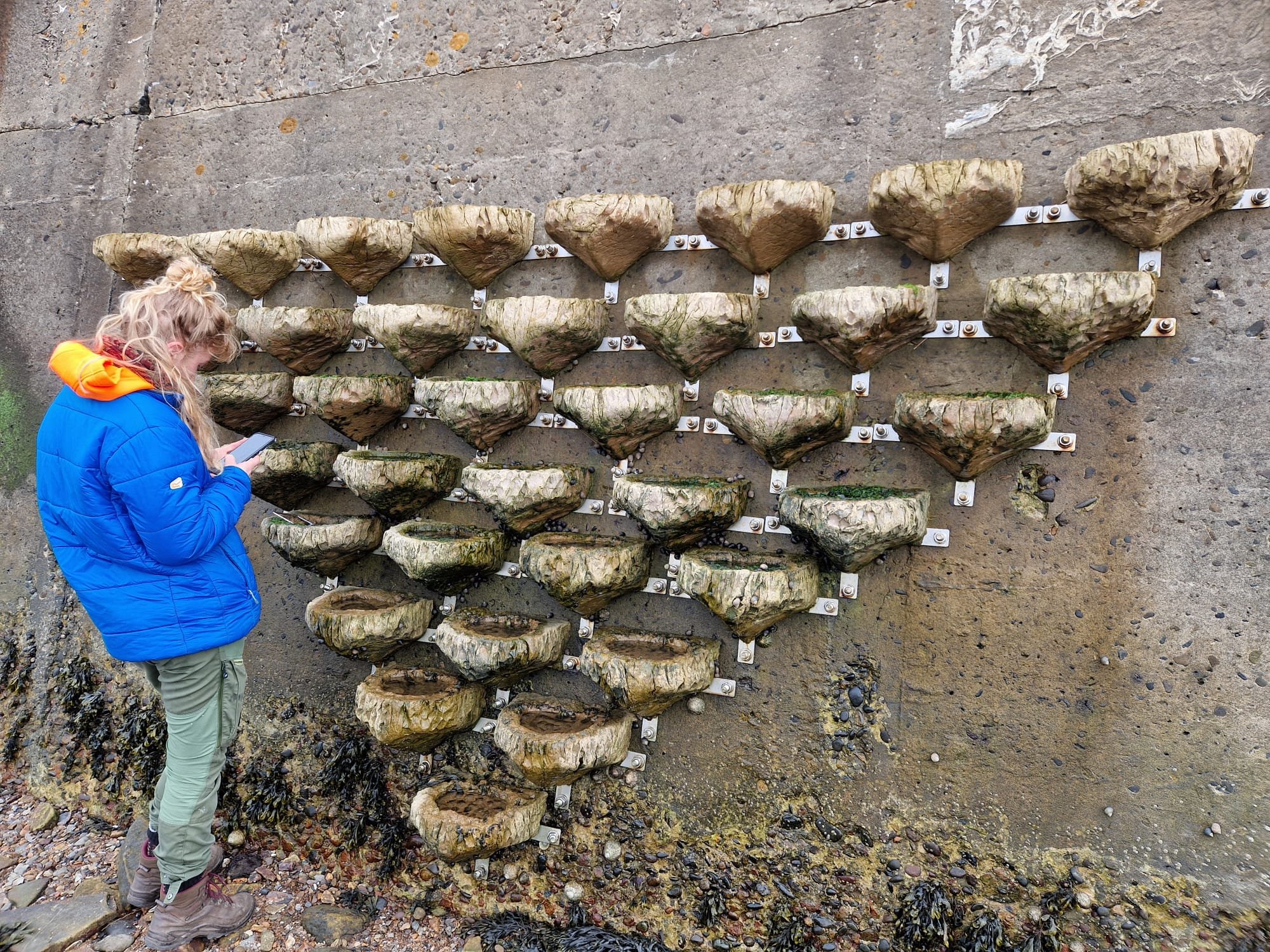Blyth Vertipool Array
Site: Blyth Pier, Northumberland
Installed: June 2023
Team: Artecology, Groundwork North East and Cumbria, Arc Consulting, ABPmer
―
Introduction:
Groundwork North East and Cumbria, in collaboration with Artecology and partners, deployed a pioneering Vertipool array at Blyth Pier to address the challenges of rising sea levels and biodiversity loss. The installation, consisting of 36 Sandown-model Vertipools arranged in a large, lowermost-pointed triangle, was designed to create expanding intertidal habitat on the seawall. This innovative configuration not only enhances biodiversity but also ensures the resilience of the coastal ecosystem in the face of climate change.
The Vertipools were strategically placed to maximise the ecological benefits of the spaces between units, which act as valuable habitats alongside the pools themselves. This approach reflects a forward-thinking solution to mitigate the impacts of sea-level rise while fostering marine biodiversity.
Monitoring of the array is ongoing, with early observations indicating a significant increase in species richness. The project has already attracted attention for its innovative design and ecological potential, positioning Blyth Pier as a model for future coastal habitat restoration projects.
Project Outcomes:
1. Biodiversity Net Gain
The Vertipool array has transformed the sterile seawall into a thriving intertidal habitat, supporting a diverse range of marine species. Early monitoring has recorded over 20 species, with expectations of further increases as the ecosystem matures.
2. Climate Resilience
The installation provides a scalable solution to combat the effects of rising sea levels, offering a blueprint for future coastal adaptations in the UK and beyond.
3. Community Engagement and Education
The project has become a focal point for local engagement, with plans to involve schools, community groups, and media in educational initiatives. The array will also feature in upcoming documentaries and media coverage, highlighting its significance in marine conservation.
Conclusion:
This project underscores the importance of collaborative, nature-based solutions in addressing the dual challenges of biodiversity loss and climate change, setting a new standard for coastal habitat restoration.
